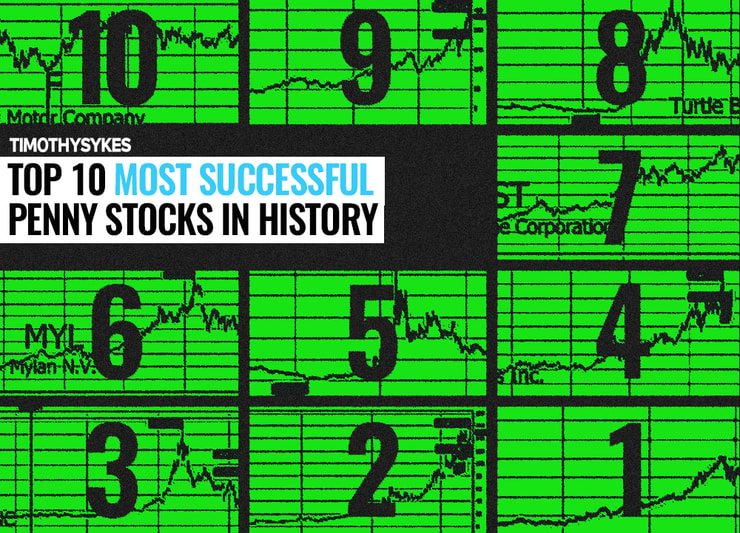Looking at the latest Trump tariffs through a trader’s lens points to one thing: catalysts move price, not opinions about policy. Tariffs reset costs on imports and exports, which changes margins, guidance, and risk for businesses and consumers. Trade the reaction, not the press conference.
Cut to the chase — here are four Trump stocks to watch!
You should read this article on Trump tariffs because it breaks down how his latest policies directly affect American consumers, businesses, and the global economy.
I’ll answer the following questions:
- What are Trump’s main motivations for imposing new tariffs?
- Which industries are most affected by Trump’s tariffs?
- How do Trump’s tariffs impact technology and semiconductor supply chains?
- What changes do Trump’s tariffs bring to steel and automotive markets?
- How are consumer goods and healthcare products affected by Trump’s policies?
- Which U.S. trade partners face the largest impact from Trump’s tariffs?
- Do Trump’s tariffs create winners in certain American industries?
- What are the main drawbacks of Trump’s tariff strategies for the U.S. economy?
Let’s get to the content!
Table of Contents
- 1 The Motivations Behind Trump’s Tariff Strategies
- 2 Key Sectors with Trump Tariff Changes
- 3 Key Trade Partners Affected by Trump Tariffs
- 4 Which Sectors Will See Rising Revenues Under Trump’s Tariff Policies?
- 5 What Are the Negative Aspects of Trump’s Tariff Policies?
- 6 Detailed Analysis of Trump’s Tariff Impact
- 7 Key Takeaways
- 8 Frequently Asked Questions
- 9 Key Takeaways
- 10 Frequently Asked Questions
- 10.1 What Causes Market Fluctuations During a Correction?
- 10.2 Do Corrections Always Lead to New Lows?
- 10.3 How Do Corrections Affect Long-Term Trading Goals?
- 10.4 How Important is Market Analysis During a Correction?
- 10.5 How Do Taxes and Tax Rates Impact Correction Strategy?
- 10.6 How Can Statistics Improve Trading During Market Volatility?
- 10.7 Are Predictions and Price Forecasts Reliable in a Correction?
The Motivations Behind Trump’s Tariff Strategies
The motivations behind Trump’s tariff strategies are bargaining power, security, and manufacturing. The administration uses tariff rates on goods to push trading partners toward reciprocal rules, smaller trade deficits, and supply chains closer to the United States. The White House cites authority under IEEPA and Section 232 to target products tied to steel, aluminum, autos, semiconductors, and other strategic industries. Governments count tariff revenue, companies pass along taxes, and prices move.
I teach traders to track what a policy does to costs today and expectations tomorrow. When governments raise trade barriers, the effect shows up in exchange rates, input prices, and earnings calls. Retaliation from partners like China, the EU, Mexico, Canada, and Japan creates second-order effects that feed back into the economy. In a trade war, threats and negotiations build uncertainty that markets must price. Price action tells you when the policy impact is real.
Key Sectors with Trump Tariff Changes
The key sectors with Trump tariff changes include technology, steel, consumer goods, autos, pharmaceuticals, services connected to Canada, and a broad set of materials. These policies touch products, supply routes, and countries in ways that raise costs for some companies while lifting revenue for others. The effect shows up in guidance around inflation, sourcing, and inventory. Companies that can pass cost through to consumers hold value better.
When tariff rates increase on imports, businesses adjust orders, investors rerate margins, and workers feel shifts in hours. Watch for exchange volatility around the dollar and for mentions of alternative suppliers under USMCA. When the administration grants exclusions or sets new rules, price responds first. Your watchlist should be ready.
If you want your watchlist to actually help you trade smarter, you need a platform that gives you real-time data.
When it comes to trading platforms, StocksToTrade is first on my list. It’s a powerful day and swing trading platform with real-time data, dynamic charting, and a top-tier news scanner. I helped to design it, which means it has all the trading indicators, news sources, and stock screening capabilities that traders like me look for in a platform.
Grab your 14-day StocksToTrade trial today—it’s only $7!
Technology (Semiconductors & Electronics)
Technology under new tariffs faces higher costs on semiconductors, printed circuit boards, displays, batteries, and key equipment tied to China and parts of Asia. Companies with goods routed through Mexico or assembled in the U.S. can reduce tariff exposure, but inputs like wafers, substrates, gases, and tools still cross borders. Governments talk security while businesses manage delivery time, yield, and price.
When a firm can shift supply or raise prices without losing orders, revenue holds and valuation can expand. When constraints hit, backlogs stretch and customers delay purchases. Exchange swings in the dollar and tighter export rules add uncertainty. Track comments from chip equipment makers, EMS providers, and consumer electronics brands that rely on China imports. The tape reacts to guidance changes before headlines catch up.
Steel
Steel sits at the center of tariff policy, with imports facing taxes justified by national security and industrial base arguments. The effect is higher domestic prices for hot-rolled coil and plate, often followed by aluminum. U.S. mills lift revenue as tariff-adjusted prices set the ceiling. Downstream buyers in machinery, construction, and auto parts see cost increases that stress margins.
I teach students to watch the spread between U.S. prices and foreign benchmarks, service center inventories, and capacity utilization. If the spread widens and backlogs rise, domestic producers can post stronger EBITDA and cash flow. If carve-outs or quotas appear, momentum can fade quickly. Port throughput, customs revenue, and any EU or Japan negotiations on steel and aluminum matter. Traders should respect how fast a change in tariff rules can flip sentiment.
More Breaking News
- Bright Horizons Surge: What’s Behind The Jump?
- SEALSQ Corp’s Quantum Leap: Market Surge Analysis
- Astera Labs Positioned for AI Growth with Strong Product Pipeline
- Will Bitfarms Bounce Back? A Closer Look
Consumer Goods
Consumer goods absorb tariffs through prices on apparel, small electronics, toys, furniture, and home products that lean on China imports. Retailers use pre-tariff inventory to slow price hikes, then reset tags as new shipments land. Businesses balance freight, currency, and tax to protect customers and revenue. The result is higher shelf prices, trade-down behavior, and mixed traffic across income groups.
Walmart flagged tariff pressure on middle-income households, which signals stress for price-sensitive categories. Companies switch suppliers to Mexico or increase U.S. content where possible under USMCA rules. When the old inventory runs off, the new cost base shows up fast. Stocks with strong private label and scale can pass more cost without losing customers.
Automotive
Automotive faces tariff pressure on steel, aluminum, and imported auto parts from China, Europe, Japan, and Mexico. Manufacturers juggle rules of origin, content thresholds, and border costs while rates remain high. When input costs rise, MSRPs creep up and incentive budgets stretch, which can slow unit sales if financing stays tight. Suppliers often feel pain before OEMs.
Exports face retaliation risk that hits U.S. vehicles abroad. The dollar’s path and any EU deal on autos can change the case quickly. Traders should watch guidance from tier-one suppliers on orders and pass-through clauses. If the administration grants targeted relief or new quotas, short squeezes in beaten-down suppliers can be sharp.
Pharmaceuticals & Healthcare Products
Pharmaceuticals and healthcare products carry tariff exposure through active ingredients, medical devices, and consumables sourced from China, India, the EU, and Mexico. Hospitals and distributors operate with tight reimbursement rules, so import taxes can squeeze budgets quickly. Companies often seek exemptions for critical products tied to public health or national security, but timing is uncertain.
I teach traders to listen for supply chain resilience, alternate sourcing, and FDA approvals that enable different suppliers. Commodity generics may struggle to pass through taxes, while branded drugs and lifesaving devices can hold value. Watch working capital, inventory builds, and comments about cross-border logistics at the border. When a waiver arrives, sentiment can flip within a session. Without relief, inflation in medical inputs pressures margins across the system.
Services (Canada)
Services tied to Canada feel tariff policy through trade rules, border processing, trucking, rail, logistics, banking, and digital services under USMCA. While services are not taxed like goods, the flow of freight sets revenue for carriers and brokers. If tariff changes slow imports, volume falls and pricing must adjust. The U.S. dollar against the Canadian dollar also changes reported results.
Policy shifts that speed customs, expand market access, or standardize digital trade can lift activity even while goods tariffs remain. If negotiations with Ottawa secure clarity, services rebound quickly because capacity is flexible. If uncertainty lingers, investors assign lower multiples. Price moves on signed statements, not talk.
Miscellaneous & Materials
Miscellaneous and materials categories like chemicals, copper, rare earths, glass, and packaging are sensitive to tariff taxes on intermediate goods. Manufacturers pay more before production begins, which raises the cost of finished products in many industries. Exporters face retaliation that targets politically visible products, which adds to risk for businesses and workers.
Companies hedge with futures, adjust payment terms, and switch to Mexico or domestic suppliers to avoid higher tariff rates. Governments revise lists and timelines, which changes the case for inventories and working capital. A new exemption can spark an upside gap. A fresh list can reset the trend lower.
Key Trade Partners Affected by Trump Tariffs
Key trade partners affected by Trump tariffs include China, the European Union, and Mexico. Policies vary by country, product, and retaliatory response. The administration uses tariffs to reset rules, reduce trade deficits, and claim reciprocity across goods and services. The dollar’s move and customs revenue signal the near-term effect on prices and volumes inside the U.S.
Signed orders, published schedules, and port data show what is real. Companies adjust quickly when governments change taxes at the border, and investors reprice risk. When negotiations reach a deal, relief rallies appear in import-heavy stocks. When retaliation escalates, exporters take the hit first.
China
China faces broad tariffs on electronics, machinery, consumer products, and industrial inputs. The administration ties these taxes to security and subsidies, while companies re-route assembly to Mexico, Vietnam, or the United States. Many core components still come from China, which keeps lead times and prices elevated. U.S. businesses try to diversify suppliers but run into capacity limits.
Agriculture, chemicals, and services can face retaliation that changes export revenue. Currency moves in the dollar and the yuan matter for landed cost. If talks restart and produce clarity, importers with heavy China exposure can bounce. Without clarity, uncertainty taxes investment and slows orders.
European Union
The European Union is working toward reciprocal rates, with a path to reduce U.S. auto tariffs if Europe opens more access to American seafood and agriculture. Steel and aluminum sit near 50 percent under current sectoral talk, which lifts U.S. mills while stressing manufacturers. EU exporters consider shipping costs, the dollar, and tariff rates as they set prices.
I teach traders to watch for signed joint statements, MFN rules, and sector carve-outs. If Brussels and Washington align, importers see margin relief and exporters plan volume. If talks stall, targeted retaliation on U.S. products returns. Customs revenue, port throughput, and guidance from multinationals with EU exposure provide early tells.
Mexico
Mexico benefits from friend-shoring as companies shift away from China. Electronics assembly, auto parts, and consumer goods move under USMCA rules that reward regional content. That supports Mexican exporters while U.S. importers manage rules of origin and border logistics. If tariff rates stay high on Asia, Mexico’s share of U.S. imports can increase.
Border wait times and security checks can raise cost even without new taxes. If the White House codifies incentives for North American supply, orders persist and revenue climbs for cross-border companies. If talks sour, inventories build and margins slip.
Which Sectors Will See Rising Revenues Under Trump’s Tariff Policies?
The sectors that will see rising revenues under Trump’s tariff policies are those with import substitution and pricing power. Domestic steel and aluminum often gain as tariff-adjusted prices rise. Certain chip equipment, specialty materials, and defense names tied to Japan’s agreement can attract orders. Packaging firms with domestic resin supply can pass cost and protect value when imports get taxed.
What Are the Negative Aspects of Trump’s Tariff Policies?
The negative aspects of Trump’s tariff policies begin with higher taxes on imports that raise prices for consumers. Companies face cost spikes, retaliation from trading partners, and supply uncertainty. Exporters lose sales when partners answer with their own barriers. Inflation pressures the economy while businesses pause investment during rule changes.
When governments adjust rules quickly, guidance turns cautious and hiring slows. The dollar’s slide or spike can amplify price moves. Higher interest rates keep financing expensive while taxes at the border raise the cost of goods. Traders should respect downside gaps on tariff headlines and cut losses fast when the policy path shifts. Discipline pays when policy risk is high.
Detailed Analysis of Trump’s Tariff Impact
Analysis of Trump’s tariff impact shows an initial shock, a reset, and a market that adapts. After the April tariff announcements, indexes sold off hard as investors priced lower growth and higher inflation. As implementation slowed and deals formed with Europe and Japan, the market recovered. Effective tariff rates moved into the low double digits as pre-tariff stock cleared customs, then companies passed more cost to customers.
Walmart warned about tariff-related cost pressure on middle-income shoppers, which aligns with higher CPI and softer retail sales. Ten-year Treasury yields swung as inflation risks rose while labor weakened. By September, the S&P 500 reached new highs as investors adapted to tariff rules, tax extensions, and hopes for Fed rate cuts.
Key Takeaways
- Tariffs are taxes that alter costs, margins, and behavior across goods and services. That means prices adjust, supply changes, and company guidance drives the market more than speeches.
- Winners have pricing power and flexible sourcing. Losers face sticky costs and weak demand.
- Trade policy can change overnight, so risk management matters. When governments sign deals, relief rallies appear. When they add barriers, the first move is lower. Your job is to be ready before the announcement, not after it.
This is a market tailor-made for traders who are prepared. Tariff changes drive volatility, and it’s up to you to capitalize. Stick to your plan, manage your risk, and don’t let FOMO drive your decisions.
These opportunities are fast and unpredictable, but with the right strategy, you can make them work for you.
If you want to know what I’m looking for—check out my free webinar here!
Frequently Asked Questions
What Are the Consequences of Trump’s Tariffs for Businesses and Consumers?
The consequences of Trump’s tariffs include higher costs for businesses, inflationary pressure for consumers, and retaliation threats from trading partners. Companies with narrow margins often cut investment or freeze hiring to manage the tax burden. For households, everyday goods can rise in price, reducing purchasing power and shifting demand toward cheaper substitutes.
How Does Donald Trump Defend His Tariff Policies?
Donald Trump defends his tariff policies as tools to protect U.S. workers, reduce trade deficits, and pressure foreign governments into fairer treatment. The administration argues that these taxes support national security and bring supply chains closer to home. While the White House points to increased tariff revenue, markets react more to whether those rules slow growth or support U.S. industries.
Did Any Trade Deal Result from Trump’s Tariff Strategy?
A trade deal often follows tariff escalation, with negotiations producing reciprocal concessions and selective relief for targeted goods. The EU agreement on autos and seafood, and the U.S.-Japan framework on aerospace and agriculture, are recent examples. These deals show how tariffs act as leverage, though companies and investors still face uncertainty until signed agreements replace threats.
| Term | Decline % | Duration | Common Cause |
|---|---|---|---|
| Correction | 10–20% | Weeks to months | Valuation reset, sentiment shift |
| Bear Market | 20% or more | Months to years | Economic downturn, earnings collapse |
| Crash | 20%+ quickly | Days to weeks | Panic, major shock (e.g., COVID, 1987 |
Mini-Corrections and Flash Crashes
Mini-corrections (3–7% drops) and flash crashes happen more frequently but are short-lived. They’re often caused by liquidity gaps or unexpected news. Flash crashes are driven by algorithmic trading or order imbalances, and they usually recover fast—though they can be brutal for anyone caught holding illiquid stocks.
How Corrections Are Different from Recessions
A correction is market-driven. A recession is economy-driven. You can have corrections without recessions, and vice versa. In 2025, despite correction risks, GDP growth forecasts remain stable, which helps limit broader economic fallout. That’s why some sectors still show strong stock market performance, even amid pullbacks.
Key Takeaways
- A stock market correction is a normal part of market trends and typically involves a 10–20% drop from recent highs.
- In 2025, high valuations, Fed uncertainty, and sector rotation are raising correction risks—especially for overbought tech names.
- The aftermath of a correction often includes a shift in leadership and opportunities for traders who adapt quickly.
- Corrections differ from bear markets and crashes in both depth and duration. Learn to identify them by price behavior and volume.
This is a market tailor-made for traders who are prepared. Market corrections drive volatility, and it’s up to you to capitalize. Stick to your plan, manage your risk, and don’t let FOMO drive your decisions.
These opportunities are fast and unpredictable, but with the right strategy, you can make them work for you.
If you want to know what I’m looking for—check out my free webinar here!
Frequently Asked Questions
What Causes Market Fluctuations During a Correction?
Market fluctuations during a correction are often driven by changes in sentiment, unexpected financial data, and reactive trading behavior. When investors respond to headlines or earnings surprises, price levels can shift quickly as buying and selling intensify. A smart trader uses volatility as feedback, adjusting strategies based on what the market is actually doing—not what they hope it will do.
Do Corrections Always Lead to New Lows?
No, corrections don’t always lead to new lows, but they often retest key support levels before recovering. Stock prices can bounce in stages, especially if broader sentiment stabilizes or sector strength returns. Recognizing patterns like failed breakdowns or double bottoms can help traders spot potential reversals without guessing.
How Do Corrections Affect Long-Term Trading Goals?
Corrections can delay or disrupt progress toward long-term trading goals if risk isn’t managed properly. Traders with defined rules can use corrections to reset, refine their edge, and reenter at better price levels. Every correction gives new insight into your system—whether it works under pressure or needs adjustments.
How Important is Market Analysis During a Correction?
Market analysis is critical during a correction because price action alone can’t always explain the effect of changing conditions. Tracking economic indicators, sector rotation, and technical signals helps traders avoid emotional trades and stay focused on what’s working. I rely on clean charts, volume shifts, and research-backed levels—not media narratives—to make trading decisions in uncertain times.
Can Corrections Happen in a Bull Market?
Yes, corrections happen even during a bull market, and they often reset overbought equities without ending the broader trend. These pullbacks allow traders to reassess risk, tighten entries, and prepare for better buying opportunities. Knowing the difference between a normal correction and a trend reversal is key to holding onto gains.
How Do Taxes and Tax Rates Impact Correction Strategy?
While taxes don’t cause corrections, the effect of capital gains taxes can influence investor behavior during sharp selloffs. Some traders hold losing shares longer to avoid triggering short-term tax liabilities, while others use corrections to harvest losses for offsetting gains. Understanding tax rates and using available resources can support smarter, cleaner exits—especially when markets get choppy.
How Can Statistics Improve Trading During Market Volatility?
Statistics can help traders quantify market volatility and identify patterns that aren’t obvious in day-to-day price action. By studying historical drawdowns, win rates, and average holding periods, traders gain insights into how their strategies perform under stress. Using statistical data builds confidence in decisions instead of relying on guesswork when volatility spikes.
Are Predictions and Price Forecasts Reliable in a Correction?
Predictions and price forecasts can provide context but should never replace your own analysis during a correction. Market volatility often makes forecasts outdated quickly, which is why real-time insights and adaptive strategies matter more. I’ve seen too many traders lean on forecasts instead of price action, only to miss the actual turning points.











Leave a reply